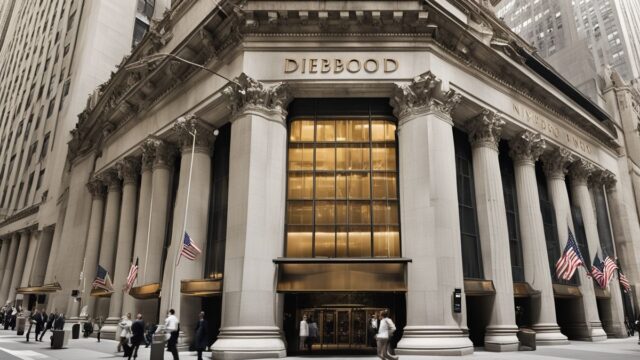At first glance, the stock market is a complex web of numbers, charts, and jargon, seemingly impenetrable to the uninitiated. Yet, at its core, it’s a story of ambition, strategy, and the relentless pursuit of success. One such narrative unfolds around Diebold Nixdorf, Incorporated (NYSE:DBD), a name that, while perhaps not household, plays a pivotal role in the financial and retail technology sectors. The recent revelation that hedge funds hold a 35% stake in the company serves as a testament to the significant sway these institutions wield, shaping not only the fortunes of Diebold Nixdorf but also the broader market landscape.
The Hegemony of Hedge Funds
Understanding the gravity of institutional ownership in Diebold Nixdorf requires peeling back the layers of what it means for a company to be under the dominion of hedge funds. These funds, armed with vast resources and research capabilities, often act as bellwethers for the market, their investment choices signaling credibility and attracting a following among individual investors. However, this influence is a double-edged sword. The phenomenon of ‘crowded trades’ looms large, wherein a simultaneous rush by multiple funds to sell shares can precipitate a sharp downturn, leaving the stock and its holders in a precarious position.
A Delicate Balance
The current ownership structure of Diebold Nixdorf paints a picture of equilibrium, albeit a fragile one. Major players such as Millstreet Capital Management LLC, Hein Park Capital Management LP, and Beach Point Capital Management LP stand out, with the top 9 shareholders collectively owning more than half of the company’s shares. This balance between larger and smaller shareholders might suggest a harmonious alignment of interests. Yet, the presence of institutional investors, particularly hedge funds, carries with it the specter of volatility, underscoring the need for potential investors to tread cautiously, armed with thorough research and an acute awareness of the market’s caprices.
The Voice of the Minority
While institutional ownership commands the spotlight, the role of the general public and insiders in Diebold Nixdorf’s share registry should not be understated. With the general public holding a 34% stake and insiders possessing a substantial amount, there exists a potential counterbalance to the outsized influence of hedge funds. Insider ownership, in particular, is often viewed as a marker of confidence in the company’s trajectory, providing a layer of reassurance to outside investors. Yet, this should not obscure the need for vigilance and a critical eye towards the motivations and actions of all stakeholders, large and small.
In the final analysis, the story of Diebold Nixdorf is a microcosm of the broader market dynamics, highlighting the intricate interplay between different classes of investors and the ripple effects of their investment choices. As the company navigates the choppy waters of the stock market, the composition of its share registry offers a window into the complex mechanisms of power and influence that drive the financial world forward. For those looking to dive into the fray, a keen understanding of these dynamics, coupled with a discerning mind, is indispensable.




